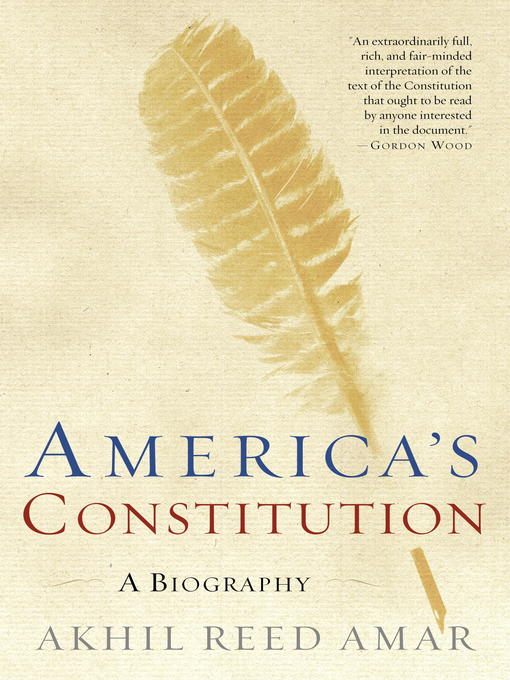
America's Constitution
A Biography
فرمت کتاب
ebook
تاریخ انتشار
2012
Lexile Score
1490
Reading Level
12
نویسنده
Akhil Reed Amarشابک
9781588364876
کتاب های مرتبط
- اطلاعات
- نقد و بررسی
- دیدگاه کاربران
نقد و بررسی

Starred review from June 20, 2005
You can read the U.S. Constitution, including its 27 amendments, in about a half-hour, but it takes decades of study to understand how this blueprint for our nation's government came into existence. Amar, a 20-year veteran of the Yale Law School faculty, has that understanding, steeped in the political history of the 1780s, when dissatisfaction with the Articles of Confederation led to a constitutional convention in Philadelphia, which produced a document of wonderful compression and balance creating an indissoluble union.
Amar examines in turn each article of the Constitution, explaining how the framers drew on English models, existing state constitutions and other sources in structuring the three branches of the federal government and defining the relationship of the that government to the states.
Amar takes on each of the amendments, from the original Bill of Rights to changes in the rules for presidential succession. The book squarely confronts America's involvement with slavery, which the original Constitution facilitated in ways the author carefully explains.
Scholarly, reflective and brimming with ideas, this book is miles removed from an arid, academic exercise in textual analysis. Amar evokes the passions and tumult that marked the Constitution's birth and its subsequent revisions. Only rarely do you find a book that embodies scholarship at its most solid and invigorating; this is such a book. Agent, Glen Hartley.

Starred review from August 15, 2005
With so much attention surrounding recent Supreme Court decisions and the nominations of the next Supreme Court justice and federal judges, citizens interested in learning more about the intellectual and political origins of the Constitution are fortunate to have this new book as a resource. Amar (Yale Law Sch.; "The Bill of Rights: Creation and Reconstruction") has written a lucid and truly engaging history of the Constitution and its amendments. The opening chapter reviews the history of the constitutional convention and ratification process with all the drama of Catherine Drinker Bowen's "Miracle at Philadelphia "or Richard B. Morris's "Witness at the Creation". The remaining chapters review each article or amendment, section by section and occasionally word by word, and explain the ideas behind the words, that is, the historical, intellectual, and political knowledge that the framers drew upon and incorporated in the document. In many ways, the work is like an annotated version of the Constitution itself but in essay form. It may also be seen as a lay reader's edition of Philip B. Kurland's five-volume "The " "Founders' Constitution". An excellent book that provides a real service and deserves a wide audience; highly recommended. -Thomas J. Baldino, Wilkes Univ., Wilkes-Barre, PA
Copyright 2005 Library Journal, LLC Used with permission.

September 1, 2005
Amar, a Yale Law School professor, approaches the Constitution with a perspective that is both accessible and unconventional. He gets into the formative process of our most revered doctrine of governance by placing it in the context of law, history, and political science. Yet he broadens his focus beyond the Philadelphia constitutional convention to include popular conversation and competing values. Amar views America's foundation as a corporate merger, reflecting 13 colonies with different legal charters and interests. He raises central questions: Was the constitutional process democratic? Was it pro-slavery? He explores the context of the subsequent amendments, initially the Bill of Rights, then those associated with the Reconstruction era through the civil rights era. Amar dares to incorporate contemporary concerns around the amendments that have often prodded us toward achieving our otherwise unrealized ideals. There is a fluidity to Amar's analysis that contrasts with those strict constructionists and those with vested interests in the original intent of our Constitution, as if such ground were sacred.(Reprinted with permission of Booklist, copyright 2005, American Library Association.)

























دیدگاه کاربران